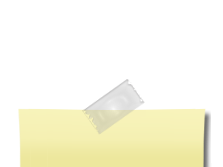
- Home Page
- Housekeeping
- Classmate Profiles
- In Memory
- 1964 Missing Classmates
- Message Forum
- May
- May Day
- Help Us Out
- Reunions
- Class Photos/Memories
- Discover Quincy
- City of Quincy
- The Soldier's Place
- Just for Fun
- The Land of Me
- The 50s and 60's
- Reflections
- Senior Moments
- As I've Aged
- I am a Seenager
- Julie Andrews Birthday
- I'm Not Old
- Grandparents
- Retired Ramblings
- Back 9
- And God Looked Down
- And Then It Was Winter
- Don't Let the Old Man In
- Senior Perks
- OMG I'm Rich
- Outdated
- Places to Retire
- The Mirror
- Senior Alphabet
- Senior Humor
- Thoughts for Today
- Retired Person's Perspective
- The Automobile
- License Plates
- Cars of the 60's
- Stainless Steel Ford
- Coolest Cars of 60s
- The Fin - 50s Cars
- FamousTV/Movie Cars
- Car Trivia
- Abandoned Cars
- Presidential State Cars
- The President's Car
- Concept Cars
- World's Rarest Cars
- 9 Rarest Cars
- Weirdest Cars
- Cars That Never Caught On
- 10 May Not Have Heard Of
- Top Fuel Dragsters
- Model Neighborhood
- Old Delivery Trucks
- Old Vintage Gas Stations
- Cars and Campers
- Auto Museums
- See the USA
- Go Karts
- Past Stats
- 1964 History/Videos

This section of the web site requires you to log in.
If you've forgotten your password, click here to reset it. Contact us if you're having trouble.
If you've forgotten your password, click here to reset it. Contact us if you're having trouble.
Powered by Class Creator